IGS-MGEX
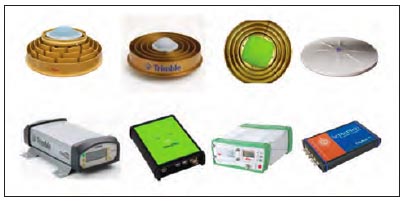 Commonly employed antennas (top) and receivers (bottom) within the MGEX network
Commonly employed antennas (top) and receivers (bottom) within the MGEX network Commonly employed antennas (top) and receivers (bottom) within the MGEX network
Commonly employed antennas (top) and receivers (bottom) within the MGEX network
On Thursday, December 5, Inside GNSS will host a FREE web seminar on “The Role of GNSS Antennas in Mitigating Jamming & Interference.”
By Inside GNSS
Working Papers explore the technical and scientific themes that underpin GNSS programs and applications. This regular column is coordinated by Prof. Dr.-Ing. Günter Hein, head of Europe’s Galileo Operations and Evolution.
By Inside GNSS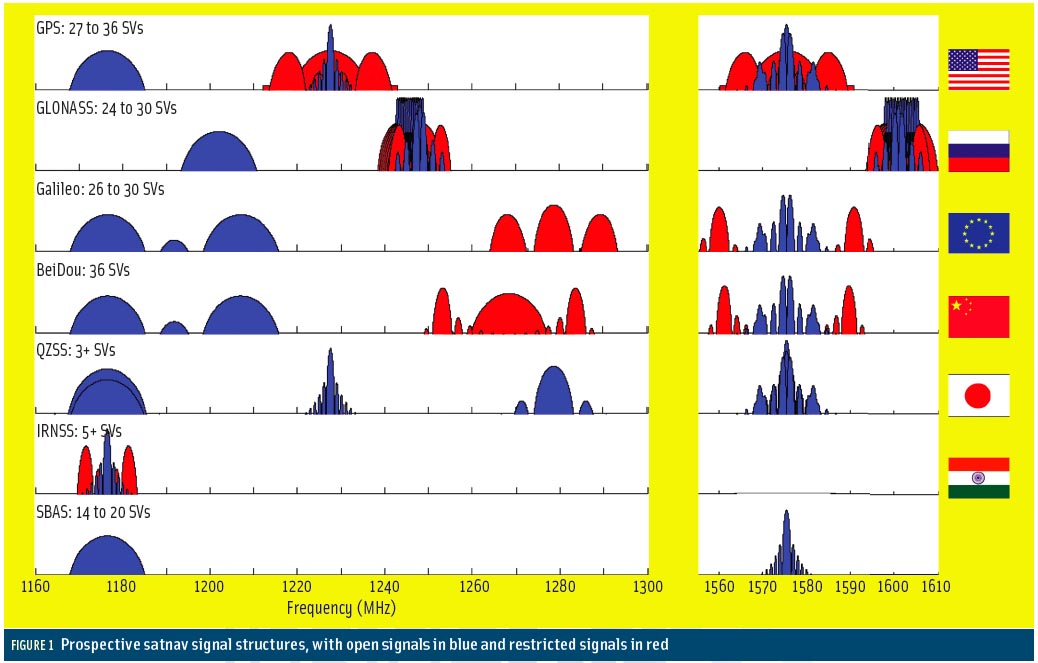
The past 15 years have witnessed tremendous developments of new and modernized satellite-based navigation (satnav) systems, including GNSSs, regional systems, and space-based augmentation systems (SBASs). These have been enabled by the original designs of GPS and GLONASS and, in turn, have stimulated the design of satnav signal structures with different characteristics from those pioneer systems.
By Inside GNSS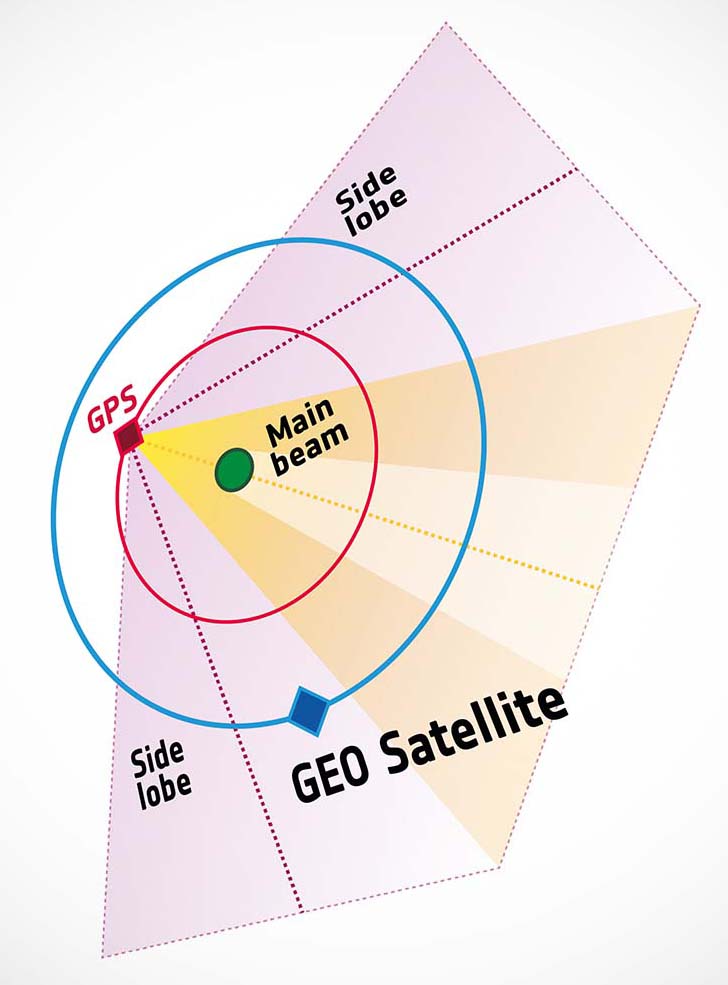 GPS signal side lobes.
GPS signal side lobes. When the European Space Agency launched its Galileo In-Orbit Validation Element-A (GIOVE-A) satellite in 2005, its main mission was to transmit Galileo test signals that secured the system’s frequencies, evaluate hardware under space environmental conditions, and so forth.
By Inside GNSSA redesign of the GPS satellites under development by Lockheed Martin will add a signal waveform generator, search and rescue payload, laser retroreflector array (LRA), and dual-launch capability beginning with Space Vehicle 9 (SV09).
By Inside GNSS
The U.S. Air Force Space Command (AFSPC) invited comments today (March 20, 2013) on its proposed plans to test CNAV message capabilities on the GPS L2C and L5 signals June 15–29.
The signals are part of the GPS modernization program and will provide, among other things, greater capability for civilian users. The notice was posted in the official government Federal Register.
By Inside GNSS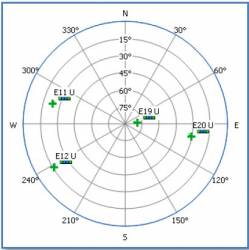 Skyplot of Galileo IOV satellite locations used in Septentrio position determination.
Skyplot of Galileo IOV satellite locations used in Septentrio position determination.Two European organizations announced successful positioning results yesterday (March 12, 2013) using signals from the four Galileo in-orbit validation (IOV) satellites.
The NavSAS group of Politecnico di Torino and Instituto Superiore Mario Boella in Turin, Italy, obtained its first Galileo autonomous position using signals from the Protoflight Model (PFM) and three Flight Model space vehicles (FM2, FM3, FM4), which have started transmitting valid navigation messages.
By Inside GNSSL-3 Interstate Electronics Corporation (L-3 IEC) announced today (March 12, 2013) that it successfully performed GPS Military Code (M-Code) testing during a “live sky broadcast event” last month.
The IEC M-Code receiver is designed to provide improved accuracy, positioning, navigation and timing in conditions where the performance of current receivers might be compromised or unavailable.
By Inside GNSS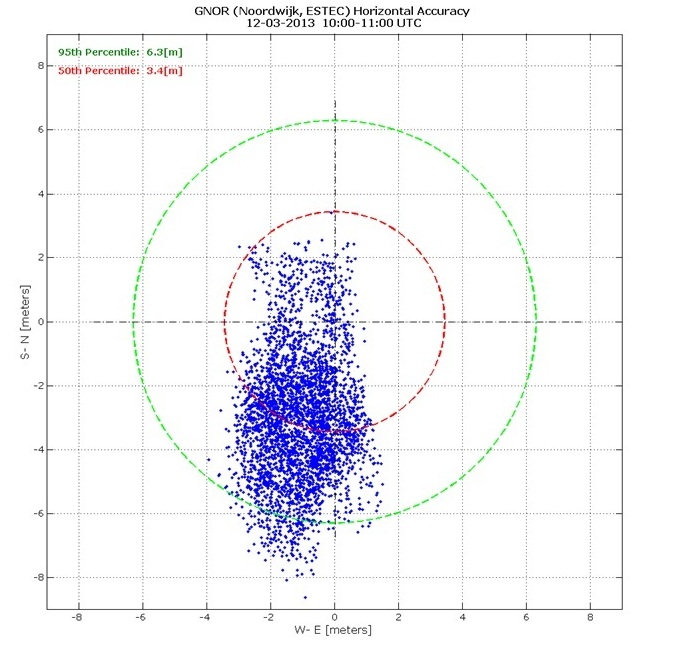 Measurements of individual Galileo horizontal position fixes performed for the first time using the four Galileo satellites in orbit plus the worldwide ground system between 1000 and 11:00 CET on Tuesday 12 March 2013, showing an overall horizontal accuracy over ESTEC in Noordwijk, the Netherlands, of 6.3 meters. ESA figure
Measurements of individual Galileo horizontal position fixes performed for the first time using the four Galileo satellites in orbit plus the worldwide ground system between 1000 and 11:00 CET on Tuesday 12 March 2013, showing an overall horizontal accuracy over ESTEC in Noordwijk, the Netherlands, of 6.3 meters. ESA figureThe European Space Agency (ESA) has announced a key milestone today (March 12, 2013) in the development of Europe’s GNSS program: the first determination of a ground location using the four Galileo satellites currently in orbit together with the system’s ground infrastructure.
This fundamental step confirms the Galileo system works as planned, according to ESA scientists.
By Inside GNSS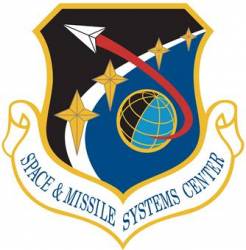
The Air Force will put the navigation message onto the civil L2C signal as part of a test it plans to conduct this summer, sources have told Inside GNSS.
The test will take place over a two-week period in June and will involve all of the satellites capable of broadcasting the signal.
By Inside GNSSSpectracom has announced the upgrade capability of its GNSS simulators to China’s BeiDou system.
The Spectracom GSG Series 5 and Series 6 GNSS simulators, released last year, are designed to be field upgradeable to simulate current and future GNSS constellations.
The recent release of the Beidou ICD specification has enabled Spectracom to ensure that its GSG Series 5 and Series 6 equipment will be able to simulate these satellites with a simple field-upgradeable firmware update.
By Inside GNSS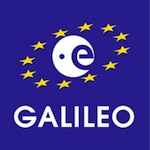
A recently announced deal between the United States and the United Kingdom to revoke the UK’s surprise patents on a key GPS technology has a glaring omission: Intentionally left out of the agreement are patents on the European Union’s version of the technology, a signal structure important to enabling Europe’s Galileo system to work seamlessly with America’s GPS constellation.
By Inside GNSS